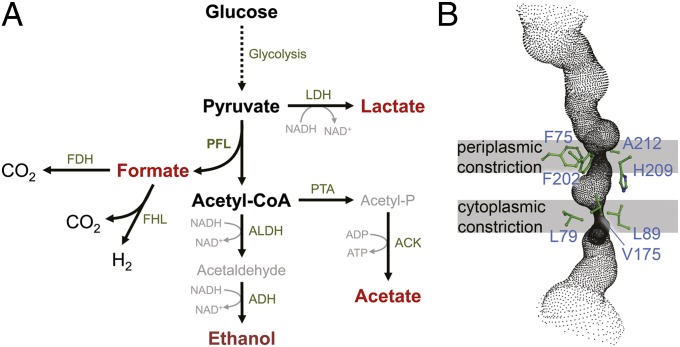Fig. 1.
Mixed-acid fermentation and the FocA channel. (A) The metabolic pathway of anaerobic mixed-acid fermentation. Glucose is oxidized along the glycolytic pathway, and the product pyruvate is reduced in a minor degree to lactate via lactate dehydrogenase (LDH). The bulk of pyruvate is cleaved into acetyl-CoA and formate by the key enzyme of the pathway, PFL. Formate is then either exported via the channel FocA for periplasmic reduction by formate dehydrogenases (FDH), or it is disproportionated to H2 and CO2 by the cytoplasmic formate:hydrogen lyase complex (FHL). Approximately half of the generated acetyl-CoA is reduced in two steps by aldehyde dehydrogenase (ALDH) and alcohol dehydrogenase (ADH) to the end product ethanol, whereas the remaining acetyl-CoA is converted to acetate via phosphotransacetylase (PTA) and acetate kinase (ACK). The products formate, lactate, acetate, and ethanol are exported from the cell. (B) Detail of the transport channel of S. typhimurium FocA with the constrictions and the amino acid residues involved in their formation.

